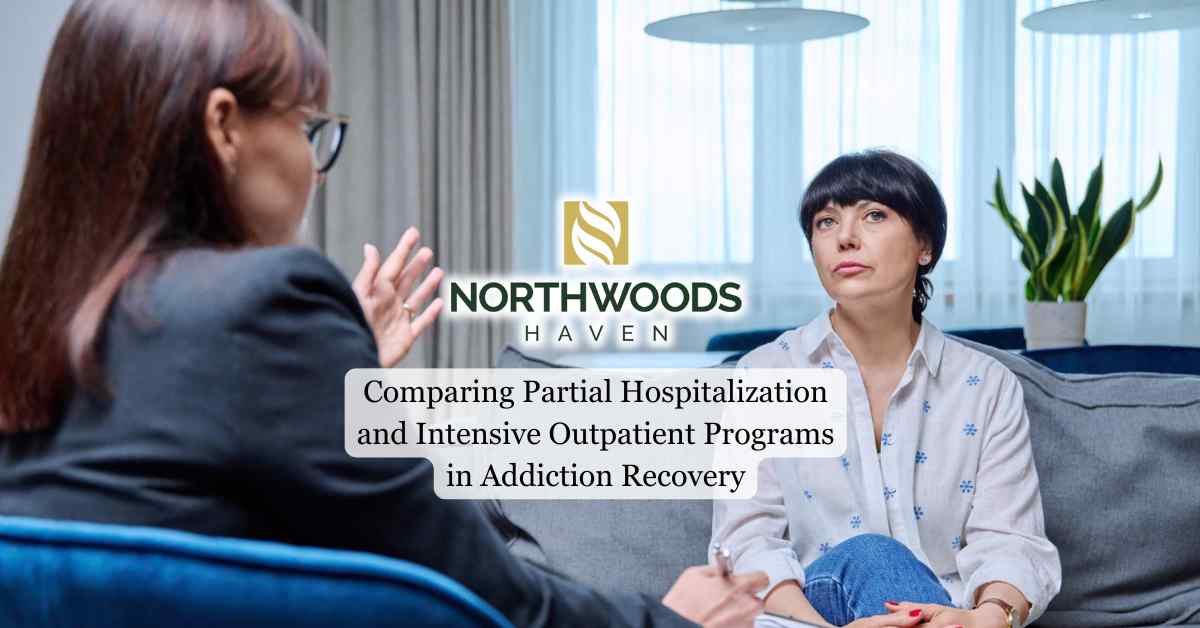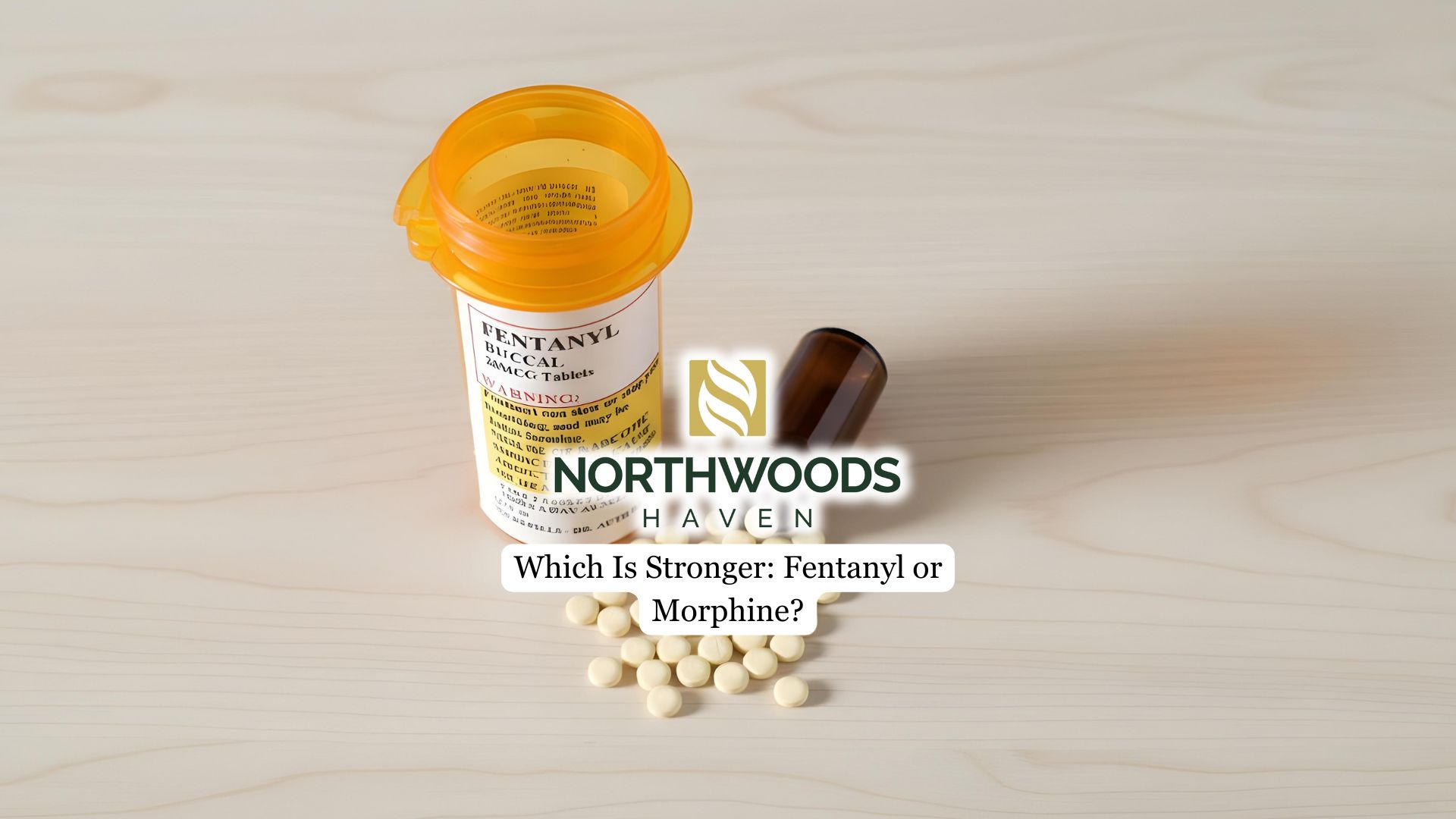Addiction recovery is a personal journey that requires a customized approach to cater to the unique needs of each individual. With a wide range of treatment options available, choosing the right program can feel overwhelming. Two of the most effective and commonly used approaches are Partial Hospitalization Programs (PHP) and Intensive Outpatient Programs (IOP).
This article explores the differences between PHP and IOP, offering a detailed comparison to help you make informed decisions about addiction treatment.
Defining PHP and IOP
While PHPs and IOPs serve different roles in the recovery process, they both aim to provide you with the necessary tools and support to overcome addiction and improve your mental health.
PHPs provide a higher level of care, requiring you to attend intensive treatment sessions 5-7 days a week for 4-6 hours per day. This program is ideal if you need more comprehensive support and medical oversight in your recovery process.
On the other hand, IOPs offer a more flexible approach, typically involving attendance 3-5 days a week for 2-4 hours per day. This allows you to maintain your daily activities while still receiving structured treatment. IOPs focus more on therapy and skill-building, with less direct medical supervision compared to PHPs.
Both programs incorporate various therapeutic modalities, such as individual therapy, group therapy, and behavioral therapies, which are tailored to your unique needs.
If you’re struggling with substance abuse, then opting for Northwoods Haven Recovery’s Intensive Outpatient Program in Minneapolis, MN is the perfect place to start. Our team will create a personalized addiction treatment plan, which will be sustainable for your circumstances.
Key Differences
These are the key differences one should take into consideration when deciding which program suits their needs best:
Intensity and Structure
PHPs require a more intensive commitment, with participants attending treatment 5-6 days a week for 6-8 hours daily. This level of structure allows for comprehensive support, including regular therapy sessions and medication management, catering to those with severe addiction issues who need a higher level of care.
In contrast, IOPs offer more flexibility, with sessions held 3-5 times weekly for 2-4 hours each. While still providing a substantial level of support, the reduced treatment intensity allows participants to maintain their daily routines and responsibilities.
IOPs are well-suited for individuals who require moderate support and can manage their recovery alongside other obligations.
Don’t think that an IOP is an easy way out of addiction, it is important to consider How Long Does an IOP last, and the dedication it requires for lasting results.
Flexibility
PHPs require a significant time commitment, typically involving attendance 5-7 days a week for 5-6 hours a day. This structured treatment can limit your ability to engage in personal activities and daily responsibilities.
On the other hand, IOPs provide more flexibility, meeting 3-5 days a week for shorter durations of 2-4 hours per session. This adaptable schedule allows you to maintain work, school, or other commitments alongside your treatment.
The flexibility of IOPs makes them suitable if you have a supportive home environment and can integrate treatment into your daily life.
While PHPs offer comprehensive programming and medical supervision, IOPs focus on finding a balance between structured treatment and personal obligations.
Being informed about What Happens After an Intensive Outpatient Treatment is crucial for staying motivated to continue your recovery journey beyond professional assistance.
Level of Supervision
In a PHP, you’ll find a higher degree of medical supervision, with daily therapy sessions guided by a multidisciplinary treatment team that may include psychiatrists, psychologists, and nurses. This increased oversight is crucial for those with severe symptoms or limited external support, as it provides a structured environment for intensive treatment and recovery.
Whereas, IOPs offer less direct medical involvement, primarily focusing on therapeutic sessions, making them more appropriate for individuals with stable living situations.

Cost and Insurance Coverage
PHPs generally incur higher costs than IOPs due to the more intensive level of care and longer treatment hours required.
Insurance coverage for both PHPs and IOPs can vary significantly. Many major insurance providers cover a portion of the costs, but it’s essential to verify your specific benefits to understand your individual coverage levels.
If you don’t have insurance or have limited coverage, you may have access to financial assistance programs that can help offset the treatment costs for either a PHP or an IOP.
To effectively navigate the financial aspects of your treatment, whether in a PHP or IOP setting, it’s crucial to understand the specific details of your insurance plan, including deductibles and copayments.
Suitability for Patients
Choosing between a Partial Hospitalization Program (PHP) and an Intensive Outpatient Program (IOP) depends on your unique needs and circumstances.
If you’re struggling with severe addiction issues or require a higher level of medical supervision, a PHP might be the best fit.
However, if you have a stable living situation and can manage daily responsibilities while attending therapy, an IOP could be more suitable. IOPs provide a more flexible treatment schedule, allowing you to participate in work or school while receiving support 3-5 times a week for 3-4 hours per session.
If you have a strong support system at home, an IOP might be ideal, whereas those with limited external support may benefit more from the structured environment of a PHP.
When deciding between a PHP and an IOP, consider the severity of your symptoms, personal treatment goals, and the need for a structured versus flexible approach.
Evaluating Effectiveness
It is believed that PHPs have higher success rates in achieving short-term sobriety compared to IOPs due to their more intensive treatment structure and daily support.
PHPs typically involve 5-6 hours of treatment each day, allowing for more comprehensive care and quicker symptom stabilization, making them effective for individuals with severe addiction issues. You’ll likely experience greater improvements in mental health symptoms and coping skills within a shorter timeframe in a PHP than in an IOP.
On the other hand, IOPs tend to provide better long-term recovery outcomes for individuals with stable support systems, as they allow for the integration of treatment into daily life while still addressing addiction issues.
The effectiveness of each program can vary based on individual factors such as the severity of your addiction, personal commitment to recovery, and the presence of a supportive home environment.
Final Thoughts from Northwoods Haven Recovery
The goal of both PHP and IOP programs is to help individuals develop the tools and strategies necessary to maintain sobriety and prevent relapse.
At Northwoods Haven Recovery we believe that the decision between a PHP and an IOP should be made in consultation with a qualified healthcare professional who can assess an individual’s specific needs and recommend the most appropriate level of care. Our team is prepared to help you navigate each step of the recovery process and provide you with the needed support in a safe environment.



